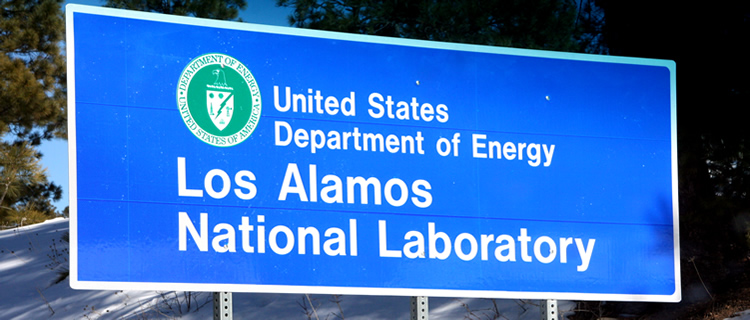A government-owned lab in Los Alamos claims it has been running a "quantum internet" for more than two years, MIT Technology Review reports. Researchers worked around the traditional difficulties of interlinking quantum-based networks by creating something of a classical-quantum network hybrid.

Quantum mechanics exposes the whacky underpinnings upon which our reality appears based. It's a seemingly unintuitive realm where sub-atomic particles behave like waves, particles simultaneously exist in two or more places and mutually exclusive outcomes can all be proven mathematically true.
Quantum computers have long-been heralded as the ultimate problem solver: a machine capable of solving problems by analyzing many, many, many possibilities at once. Even though quantum computing is likely a ways off, some quantum mechanical phenomena like quantum dots already have to be taken into account when designing a modern microprocessor.
When applied to networking though, quantum principles promise an inherently secure mode of communication, one which (theoretically) cannot be eavesdropped, tampered with or otherwise observed except by its target recipient. Quantum networks exploit naturally-occurring features seemingly baked into the fabric of our universe – quantum entanglement, probability and observation principles – to prevent tampering. Any attempts to alter or even observe transmissions sent over a quantum network should alter its contents, tipping off detection mechanisms attuned to such changes.
Above: Infamous double-slit experiment reveals the crazy nature of quantum mechanics
Although this innate inability to observe data during transmission is great in terms of security, it has proved challenging for researchers. Traditional routers must "observe" data packets in order to route the flow of traffic across networks. This act "dirties" the data, either scrambling it or making it insecure before it reaches its final destination.
To work around this issue, researchers developed a method of converting quantum data into classical data... and then back again into its quantum counterpart. By crafting a hub-and-spoke network model, the "spokes" transmit quantum information while a central hub receives it, converts it and re-transmits it once again as packets of the quantum-kind.
The upshot of Los Alamos' design is its relative simplicity. However, there are two glaring limitations.
First, the hub-and-spoke network model itself is a problem. This brand of network topology is not easily scaled, so deploying this solution as a global quantum Internet would be inefficient at best, intractable at worst.
The second shortcoming is diminished security. While the data packets traveling along the network's spokes are protected by the magic of quantum theory, data transcoded at the central hub is not. As a result, the hub's security determines the trustworthiness of the entire network. This detail defeats the "perfect" security promised by a purely quantum network.